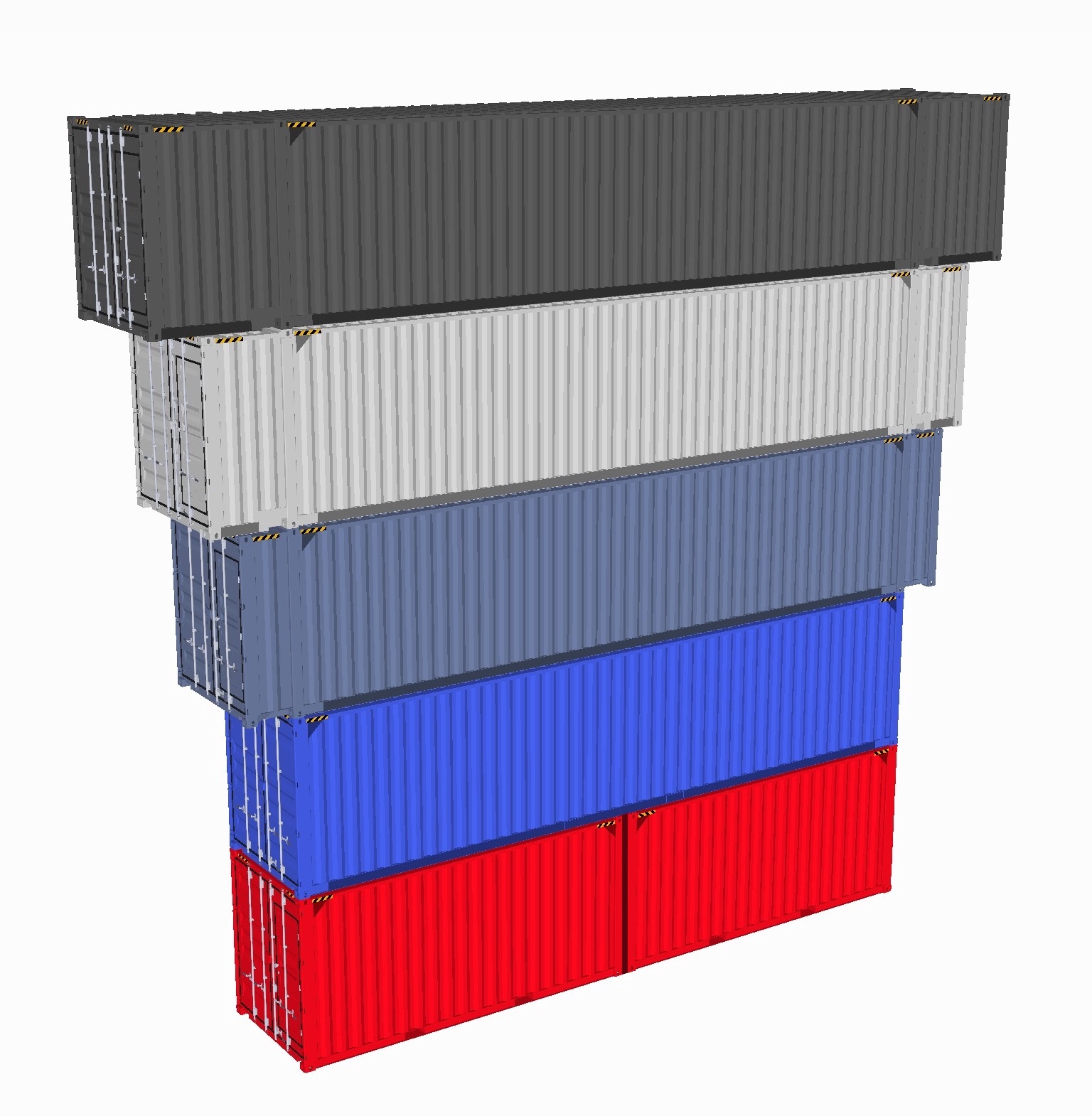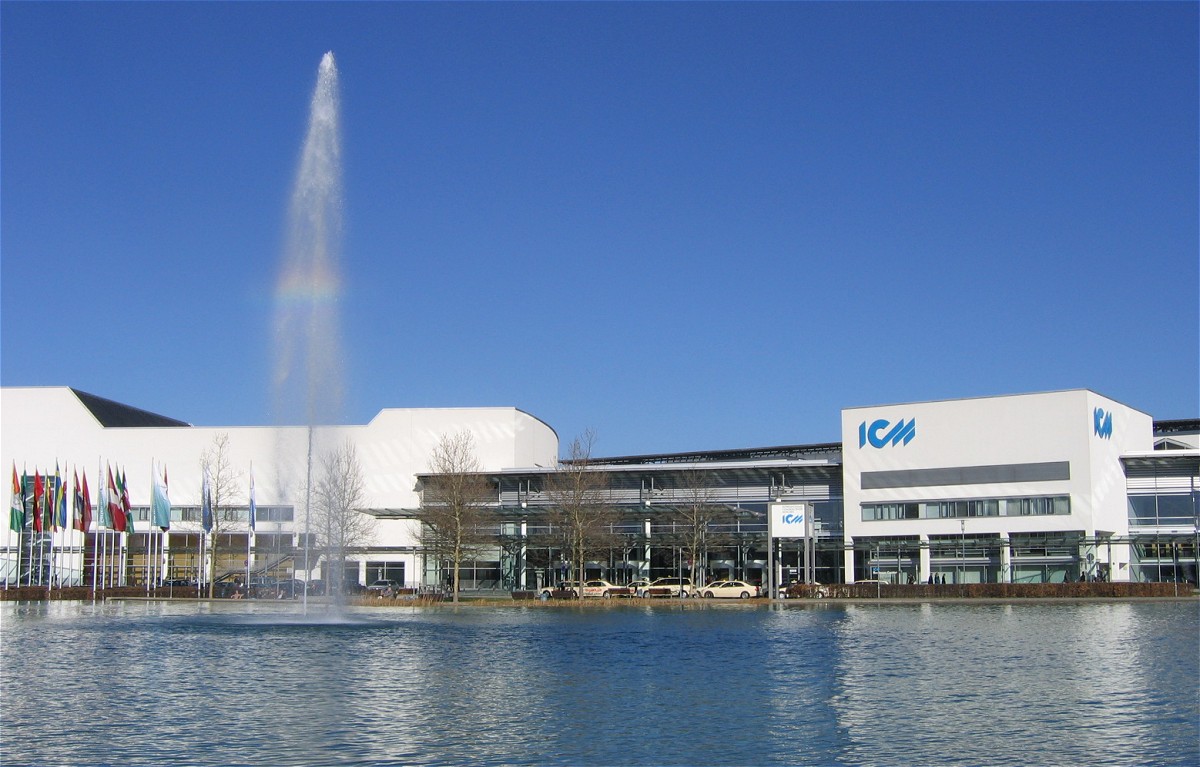|
München-Riem Station
Munich-Riem station is an S-Bahn station and container terminal in the east of Munich in the district of Trudering-Riem on the Munich–Mühldorf railway in the German state of Bavaria. The station is served by the Munich S-Bahn and is classified by Deutsche Bahn as a category 4 station. History Riem station was established on 1 May 1871 with opening of the railway to Mühldorf. On 1 October 1938, it was renamed to München-Riem. Since 28 May 1972 passenger services to the station have only been operated by S-Bahn trains. Infrastructure Currently it is served by S-Bahn line S 2 (Erding–Petershausen). On the southern side of the station it is possible to transfer to bus routes 190 and 194 of the Münchner Verkehrsgesellschaft (Munich Transport Company, MVG). On the northern side, in the Dornach district, there is a bus stop served by MVV bus routes 263 and 264. It does not have disabled access. The station has a 210 meter long central platform and a 219 m long side platfor ... [...More Info...] [...Related Items...] OR: [Wikipedia] [Google] [Baidu] |
Münchner Verkehrs- Und Tarifverbund
The (MVV; Munich Transport and Tariff Association) is the transit authority of the city of Munich, the capital of the German state of Bavaria. Its jurisdiction covers the city and its surrounding area, responsible for the Munich S-Bahn commuter trains, the Munich U-Bahn, the Munich tramway and buses. The MVV coordinates transport and fares in area comprising the city of Munich and eight surrounding districts. It is jointly owned by the state of Bavaria, the city of Munich and the eight surrounding districts, which are: * Landkreis Bad Tölz-Wolfratshausen * Landkreis Dachau * Landkreis Ebersberg * Landkreis Erding * Landkreis Freising * Landkreis Fürstenfeldbruck * Landkreis München * Landkreis Starnberg Transport services are provided by over 40 companies. These include the Bayerische Oberlandbahn, the Deutsche Bahn that also operates the S-Bahn, the Münchner Verkehrsgesellschaft The ''Münchner Verkehrsgesellschaft'' (MVG; Munich Transport Company) is a municipall ... [...More Info...] [...Related Items...] OR: [Wikipedia] [Google] [Baidu] |
Munich S-Bahn Stations
Munich ( ; german: München ; bar, Minga ) is the capital and most populous city of the States of Germany, German state of Bavaria. With a population of 1,558,395 inhabitants as of 31 July 2020, it is the List of cities in Germany by population, third-largest city in Germany, after Berlin and Hamburg, and thus the largest which does not constitute its own state, as well as the List of cities in the European Union by population within city limits, 11th-largest city in the European Union. The Munich Metropolitan Region, city's metropolitan region is home to 6 million people. Straddling the banks of the River Isar (a tributary of the Danube) north of the Northern Limestone Alps, Bavarian Alps, Munich is the seat of the Bavarian Regierungsbezirk, administrative region of Upper Bavaria, while being the population density, most densely populated municipality in Germany (4,500 people per km2). Munich is the second-largest city in the Bavarian dialects, Bavarian dialect area, ... [...More Info...] [...Related Items...] OR: [Wikipedia] [Google] [Baidu] |
Twenty-foot Equivalent Unit
The twenty-foot equivalent unit (abbreviated TEU or teu) is an inexact unit of cargo capacity, often used for container ships and container ports.Rowlett, 2004. It is based on the volume of a intermodal container, a standard-sized metal box which can be easily transferred between different modes of transportation, such as ships, trains, and trucks. The container is defined by its length, although the height is not standardized and ranges between and , with the most common height being . It is common to designate a container as 2 TEU, rather than 2.25 TEU. Forty-foot equivalent unit The standard intermodal container is designated as twenty feet long (6.1m) and wide. Additionally there is a standard container with the same width but a doubled length of forty feet called a 40-foot (12.2m) container, which equals one forty-foot equivalent unit (often FEU or feu) in cargo transportation (considered to be two TEU, see below). In order to allow stacking of these types a forty-fo ... [...More Info...] [...Related Items...] OR: [Wikipedia] [Google] [Baidu] |
Gantry Crane
A gantry crane is a crane built atop a gantry, which is a structure used to straddle an object or workspace. They can range from enormous "full" gantry cranes, capable of lifting some of the heaviest loads in the world, to small shop cranes, used for tasks such as lifting automobile engines out of vehicles. They are also called portal cranes, the "portal" being the empty space straddled by the gantry. The terms gantry crane and overhead crane (or bridge crane) are often used interchangeably, as both types of crane straddle their workload. The distinction most often drawn between the two is that with gantry cranes, the entire structure (including gantry) is usually wheeled (often on rails). By contrast, the supporting structure of an overhead crane is fixed in location, often in the form of the walls or ceiling of a building, to which is attached a movable hoist running overhead along a rail or beam (which may itself move). Further confusing the issue is that gantry cranes may a ... [...More Info...] [...Related Items...] OR: [Wikipedia] [Google] [Baidu] |
Messe München
Messe München GmbH is the operator of the Neue Messe München exhibition center, the ICM Internationales Congress Center München and the MOC Veranstaltungscenter München. The exhibition space of the 16 halls together is 180,000 m2 and another 425,000 m2 of outdoor area, making Messe München by far the holder of the largest outdoor area of all exhibition companies in Germany. Messe München organizes some 40 trade fairs for capital and consumer goods and key high-tech-industries in Munich and abroad. Overview Partners of Messe München are the Bavaria, Free State of Bavaria and the City of Munich. Chairman of the Board since January 2010 is Klaus Dittrich. In the exhibition area there are exhibition rooms, the exhibition hall, exhibition tower and the International Congress Centre Munich (ICM). The architects were Bystrup Architecture Design Engineering, Bregenhøj + Partners, Kaup, Scholz, Jesse + Partner. Messe München is a member of the AUMA, FKM, GDG, Union des Foires I ... [...More Info...] [...Related Items...] OR: [Wikipedia] [Google] [Baidu] |
Erding Ring Closure
The Erding ring closure (german: Erdinger Ringschluss) is a project to build a long, double-track railway that is planned to run from Freising via Munich Airport to Erding. Route Line 5559 would run from Freising station as a four-track line together with line 5500 (the Munich–Regensburg railway) to Neufahrn North junction (''Abzweig Neufahrn-Nord''). It would run over the "Neufahrn counter curve" (''Neufahrner Gegenkurve'') to reach line 5557 (the Neufahrn Link) at Neufahrn East junction (''Abzweig Neufahrn-Ost'') and connect with line 5556 (Munich East–Munich Airport railway) at Airport West junction (''Abzweig Flughafen-West''). From there the existing double-track line would be shared through the airport. The route from Freising to Munich Airport is long. The route would continue under the eastern apron of Munich Airport in a tunnel until it resurfaces near Schwaigerloh. It would then run above ground to Erding. In the Schweigerloh area it is intended to build a system ... [...More Info...] [...Related Items...] OR: [Wikipedia] [Google] [Baidu] |
Münchner Verkehrsgesellschaft
The ''Münchner Verkehrsgesellschaft'' (MVG; Munich Transport Company) is a municipally owned company responsible for operating public transport in Munich, Germany. It operates buses, the Munich tramway and the Munich U-Bahn. The company is a subsidiary of Stadtwerke München (Munich City Utilities), and a member of the Münchner Verkehrs- und Tarifverbund (MVV; Munich Transport and Tariff Association). MVG Museum The MVG maintains a museum, located at Ständlerstraße The Ständlerstraße is a 3.5 km long street in the south of Munich. It is a part of the exterior ring planned in earlier years. It runs from the Stadelheimer Straße, the corner of Schwanseestraße in Giesing, crosses the A8, is crossed by the c ... 20 near the terminus of tram line 18. The museum contains a collection of some 25 historic trams, buses and utility vehicles from different eras. It opens to the public on alternate Sundays. References External links MVG web site (German language) [...More Info...] [...Related Items...] OR: [Wikipedia] [Google] [Baidu] |
Trudering-Riem
Trudering-Riem (Central Bavarian: ''Trudaring-Ream'') is the 15th borough ('' Stadtbezirk'') of Munich, Bavaria, consisting of the quarters (''Stadtteile'') Trudering and Riem. This area is the former location of Munich's old airport, Riem Airport. Location In the west the borough borders the boroughs Berg am Laim and Bogenhausen, in the south Ramersdorf-Perlach, in the north Johanneskirchen and in the east the municipalities Aschheim, Feldkirchen, Haar and Putzbrunn (belonging to the Munich district). There are the following subdistricts: * Am Moosfeld * Gartenstadt Trudering * Kirchtrudering * Messestadt Riem Messestadt Riem (literally: Convention City Riem; Central Bavarian: ''Messestod Ream'') is an urban district in the east of Munich. It is part of the municipality 15 Trudering-Riem, and located entirely on the grounds of the 1992 abandoned Munich ... * Neutrudering * Riem * Straßtrudering * Waldtrudering The old village center of ''Riem'' is situated around t ... [...More Info...] [...Related Items...] OR: [Wikipedia] [Google] [Baidu] |
S2 (Munich)
The S2 is a service on the Munich S-Bahn network. It is operated by DB Regio Bayern. It runs from Petershausen station to Erding station via Dachau station, Dachau, München-Laim station, Laim, central Munich, Munich East station, Munich East and Markt Schwaben. The line is operated at 20-minute intervals between Dachau and Markt Schwaben. One train an hour continues from Dachau to Altomünster and the other two continue from Dachau to Petershausen so that the gap between trains alternates between 20 and 40 minutes between Dachau to Petershausen. Similarly only two out of three continue from Markt Schwaben to Erding, creating a similar varying gap between trains. It is operated using DBAG Class 423, class 423 four-car electrical multiple units, usually as two coupled sets. In the evenings and on Sundays they generally run as single sets. Extra peak hour services are operated between Dachau and Altomünster, using DB Class 420, class 420 four-car electrical multiple units (this is ... [...More Info...] [...Related Items...] OR: [Wikipedia] [Google] [Baidu] |
German Railway Station Categories
The approximately 5,400 railway stations in Germany that are owned and operated by the Deutsche Bahn subsidiary DB Station&Service are divided into seven categories, denoting the service level available at the station. This categorisation influences the amount of money railway companies need to pay to DB Station&Service for using the facilities at the stations. Categories Category 1 The 21 stations in Category 1 are considered traffic hubs. They are permanently staffed and carry all sorts of railway-related facilities, as well as usually featuring a shopping mall in the station. Most of these stations are the central (commonly referred to as main) stations (''Hauptbahnhof'' or ''Hbf'') of large cities with 500,000 inhabitants and above, though some in smaller cities, such as Karlsruhe Hauptbahnhof, are regarded as important because they are at the junction of important railway lines. Berlin, Hamburg, Munich and Cologne, the four biggest cities in Germany, have more than ... [...More Info...] [...Related Items...] OR: [Wikipedia] [Google] [Baidu] |

.jpg)

.jpg)

